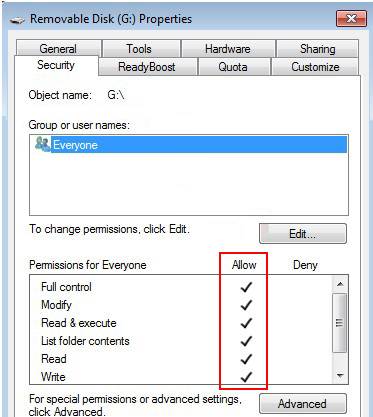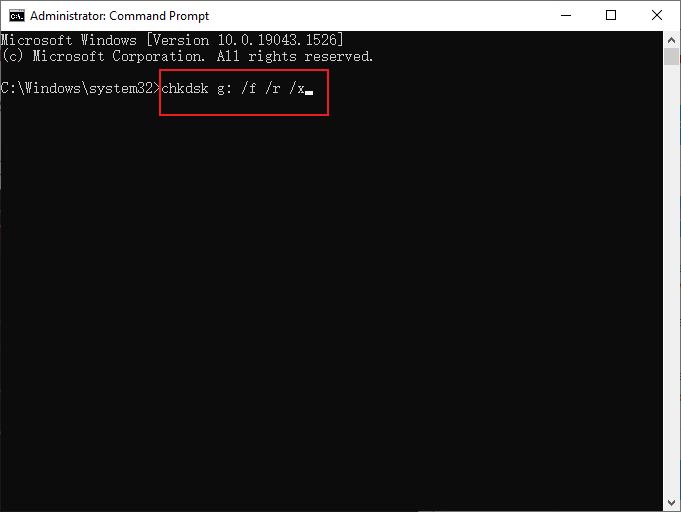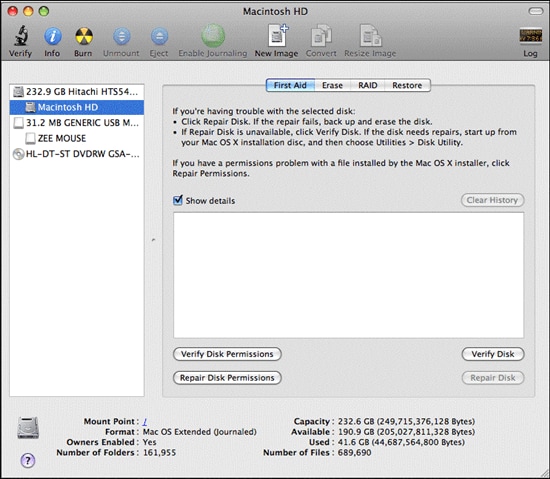How to Remove Write Protection from Read-only USB Flash Drive?
Hello all, I got a message reading "The disk is write-protected" whenever I inserted my SanDisk pen drive to my computer. I was unable to disable the write protection on my flash drive. Can anyone help me? Thanks.
Content Navigation
What Is a Read-Only Flash Drive?
Once you get similar messages like the following ones when using the SanDisk flash drive, it means the pen drive becomes read-only and write-protected. You're unable to edit data, delete files, or save information on this drive, unless you find the fixes.
- The common error of "The disk is write-protected" will occur when you trying to format an external disk such as (USB flash drive, SD memory card, or pen drive).
- If you start to copy or modify the files on the drive, the pop-up window show you "The disk is write-protected. Remove this write-protection or use another disk".
- A read-only flash drive won't allow you to copy the file. When you want to do that, a message might appear - "You cannot copy files to the volume".

How to Remove Write Protection from USB Flash Drive on Windows?
How do I remove write protection from a read-only USB drive in Windows 10/11?
If your USB disk gets this error on Windows computer, you may think the USB drive is broken and unable to use. The flash drive becomes a read-only situation, and you cannot manage data on it, like copying, deleting or writing the files on the disk. How to remove the write protection from a read-only flash drive? On the next guide, we will show you how to disable write protection from flash drive, SD card or pen drive in Windows 11/10/8/7.
Solution 1: Check the Physical Switch
Some USB drives may have a switch on the side or button. You can turn it off or on to disable or enable the write protection. If there is a switch on your USB disk, try switching it to the unlock side.

After this, your USB flash drive should now work well. If it doesn't work, you can also follow the next steps to remove write protection from USB drive with Regedit.exe.
Solution 2: Change the Registry Key
If you find that there is not a switch on your USB drive, you can remove the write protection from USB drive using Registry Key.
- Press key of Windows Key + R and type regedit in Run dislog box and Enter.
- On the pop-up window Registry Editor, go to the HKEY_LOCAL_MACHINE\SYSTEM\CurrentControlSet\Control\StorageDevicePolicies.

- Double click the WriteProtect value in the right pane.
- You can change the value data from 1 to 0, then click OK to save the change, and close the Regedit window.
- Restart your computer and connect the USB drive to it. Check if the drive is working well and no longer write-protected. If it isn't read-only now, you can continue using the USB flash drive.
Solution 3: Change Security Permissions
- Plug in the write-protected disk.
- Press "Windows+E" and right-click on the drive.
- By right-clicking on the disk, you can choose "Properties", and then select "Security".

- To Edit the permissions, you should now select "Everyone" from "Group or user names".
- Select "Edit" and go to "Permissions"
- Check all the boxes labeled as "Allow"

- Click "Apply" and exit. Your disk's write protection has now been removed.
Solution 4: Check and Remove Virus/Malware on USB Drive
Your USB drive may contain some virus or malware that can make the USB device become read-only. In this case, you need to download an antivirus software to find and remove the malware.
Or you can use the Virus & threat protection utility on Windows computer:
- Type virus in the search box next to the Start menu.
- Click Virus & threat protection.
- Start a virus scanning.
- When it completes, restart your computer and check if you’ve removed the write protection from the USB drive.

Solution 5: Run CHKDSK Command
If there is any disk error in your USB drive, it can cause the disk become read-only. In this case, you can fix the error using the Windows CHKDSK feature.
- Type cmd in the search bar next to the Start menu. Right-click on Command Prompt and run it as administrator.
- Type "chkdsk g: /f /r / x" in the Command window, and press Enter to proceed,(g refers to the drive letter of the read-only USB disk.)

Solution 6: Format USB Drive
If the methods introduced above fail to remove write protection from the USB, now it’s time to try formatting since the USB device’s file system may have been corrupted. There are several ways to format the USB drive on Windows. Here we will show you the Diskpart Command way:
- Connect your flash drive to the computer, and launch a command prompt by searching for cmd.exe or "Command Prompt" in the Start menu.
- Type the following and press Enter after each command:
diskpart
list disk
select disk #(# means the name of your write-protected disk)
attributes disk clear readonly
clean
create partition primary
format fs=ntfs.

- Exit the Command Prompt.
How to Remove Write Protection from USB Pen Drive on Mac?
If you're working on a Mac computer, you also will receive the "Read Only" error on the external drive. On the following steps, we will show you how to disable write protection disk on Mac.
Solution 1: Format Write-Protected Pen Drive on Mac
To disable the write-protected disk on Mac, you can follow the next steps to format the drive on macOS:
- Open the Disk Utility, and the application window will open.
- Click on your USB flash drive on the left pane of Disk Utility.
- Click on the Erase tab, then select the format type. Select either "MS-DOS File System" or "exFAT" both working well on Windows and Mac.
- Then click on the "Erase" option to start formatting the USB flash drive.

Solution 2: Fix and Repair Permissions
Check if the drive's permissions are corrupted or not. You can fix the error using Disk Utility. Follow the steps below to remove write protection from Read-only USB drive on Mac.
- Go to the Disk Utility in the Utilities folder.
- Select the device which is ready-only need to remove write protection.
- Click on the First Aid and the OS will start to scan your drive.

Video tutorial: How to Remove Write Protection from Pen Drive/USB in Windows?
Why Is My USB Drive Read Only?
Formating the file system of the flash drive can cause the write protection. Usually, a pen drive uses the NTFS file system on a Windows computer. You can keep writing and reading data stored inside it. However, sometimes you might want to use it on a Mac computer. So you format the flash memory stick to make it compatible with the Mac computer. The file system is indeed readable and the stored data is accessible on a Mac computer due to the Mac feature. However, writing data is not available. The write protection is added on the USB flash drive by default.
How do I disable write protection on a flash drive? Here, we offer both Windows and Mac solutions to help you fix read only flash drives easily and quickly.
Conclusion
We hope those solutions could help you fix and remove write protection from USB drive on Windows and Mac. If it still fails to fix out the problem, you should buy a new USB flash drive. Also, if you need to get all USB data back, you can download Recoverit Data Recovery, powerful USB data recovery software, to help you out. Follow the guide to recover files from USB drive easily.
People Also Ask
-
Why is my USB drive showing as read-only and write-protected?
There are several reasons why a USB drive may be showing as read-only and write-protected. Some common causes include:
1.A physical write protection switch on the USB drive is toggled to the locked position.
2.The USB drive has been configured with specific permissions or settings.
3.The file system of the USB drive is corrupted.
4.The USB drive is infected with malware or has been compromised.
-
How can I remove write protection from a read-only USB drive?
There are several ways to remove write protection from a read-only USB drive:
1.Check the Physical Switch.
2.Change the Registry Key.
3.Change Security Permissions.
4.Check and Remove Virus/Malware on USB Drive.
5.Run CHKDSK Command.
6.Format USB Drive.
USB Topic
- Recover USB Drive
- Format USB Drive
- Fix/Repair USB Drive
- Know USB Drive












 ChatGPT
ChatGPT
 Perplexity
Perplexity
 Google AI Mode
Google AI Mode
 Grok
Grok
























Sue Wayne
staff Editor